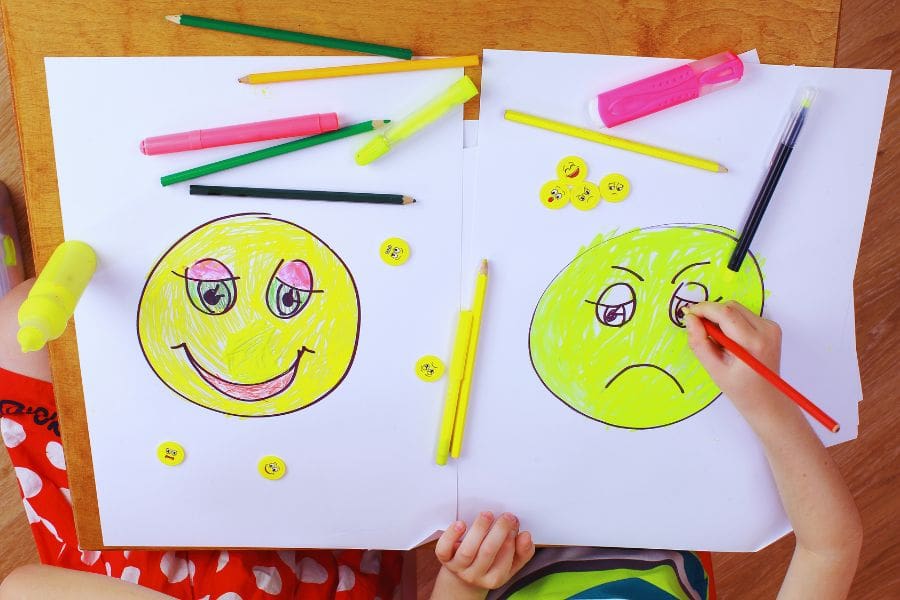
Fostering Social and Emotional Wellbeing in Schools
- Posted by ednnovate
- Categories School Development
- Date November 13, 2023
Strategies for Implementation
In the evolving landscape of education, the social and emotional wellbeing of students and educators has emerged as a crucial area of focus. The challenges of recent years, particularly the COVID-19 pandemic, have underscored the need for schools to actively engage in strategies that support mental and emotional health. Let’s delve into research-backed strategies for implementing effective social and emotional wellbeing programs in educational settings.
The Imperative of Social and Emotional Wellbeing
Social and emotional wellbeing encompasses the skills and abilities to understand and manage emotions, set positive goals, show empathy, maintain relationships, and make responsible decisions (CASEL, 2020). The pandemic has heightened mental health concerns, with a notable increase in depression, anxiety, and stress among young people (Loades et al., 2020). Addressing these issues is not only vital for the immediate welfare of students and teachers but also for long-term academic and life success.
Deepening SEL Curriculum Integration
SEL programs are at the heart of nurturing students’ holistic development. These programs are designed to develop five key competencies:
- Self-Awareness: This involves understanding one’s emotions, thoughts, and values, and how they influence behavior. It includes accurately assessing one’s strengths and limitations, and possessing a well-grounded sense of confidence and optimism.
- Self-Management: This is about regulating one’s emotions, thoughts, and behaviors effectively in different situations. It includes managing stress, controlling impulses, motivating oneself, setting and working toward personal and academic goals.
- Social Awareness: This competency entails understanding and empathizing with others, including those from diverse backgrounds and cultures. It involves recognizing social norms for behavior and recognizing family, school, and community resources and supports.
- Relationship Skills: This involves establishing and maintaining healthy and rewarding relationships based on cooperation. It also includes resisting inappropriate social pressure, resolving conflicts constructively, and seeking help when needed.
- Responsible Decision-Making: This involves making ethical, constructive choices about personal and social behavior. It includes evaluating the consequences of various actions and considering the well-being of oneself and others.
By integrating SEL into their curriculum, schools can foster a comprehensive learning environment that extends beyond academic instruction. The implementation of SEL has shown to enhance not just emotional intelligence, but also students’ academic performance. For instance, Taylor et al. (2017) in their meta-analysis found that students participating in SEL programs showed improved classroom behavior, an increased ability to manage stress and depression, and better attitudes about themselves, others, and school.
Implementing Effective Strategies
1. Integrating Social-Emotional Learning (SEL) Curriculum
SEL programs aim to develop critical competencies like self-awareness, self-management, social awareness, relationship skills, and responsible decision-making (Durlak et al., 2011). Implementing an SEL curriculum is foundational for nurturing these skills. Research has shown that SEL not only enhances emotional intelligence but also positively impacts academic performance (Taylor et al., 2017). Schools can integrate SEL into their curricula through explicit instruction, integration with academic subjects, and fostering a school-wide culture that reflects these values.
2. Professional Development for Educators
Educators are central to creating a supportive learning environment. Training in SEL competencies can empower teachers to better support their students’ emotional wellbeing and manage their own stress (Schonert-Reichl, 2017). This training should include strategies for recognizing and addressing student emotional issues, creating a classroom environment conducive to emotional wellbeing, and managing teacher burnout (Herman et al., 2018).
3. Creating a Supportive School Climate
A positive school climate, where students feel safe and supported, is fundamental for promoting wellbeing. Establishing practices like restorative justice, peer mentoring, and inclusive policies can help create such an environment (Thapa et al., 2013). Schools can foster this climate by encouraging student voice, promoting a sense of belonging, and ensuring a safe and respectful environment for all.
4. Family and Community Engagement
Families and the broader community play a significant role in reinforcing SEL and wellbeing initiatives. Collaboration with families and community resources ensures a consistent and supportive environment beyond the school (Albright & Weissberg, 2010). Schools can engage families through educational sessions, regular communication, and involvement in school events. Collaborating with community mental health resources can also provide additional support for students and families.
5. Utilizing Technology and Digital Tools
Technology, when used appropriately, can be a valuable asset in teaching SEL skills (D’Mello et al., 2020). Digital tools and platforms can provide interactive and engaging ways to learn and practice SEL skills. However, it’s crucial to balance digital methods with face-to-face interaction and ensure that technology supplements, rather than replaces, direct social interaction.
The Collaborative for Academic, Social, and Emotional Learning (CASEL) provides a comprehensive guide to effective SEL programs. This guide features a wide selection of SEL programs. CASEL’s guide is designed to help education leaders select evidence-based SEL programs that best meet the needs of their communities. It allows users to search for programs based on local priorities, compare programs, and determine opportunities for professional learning and implementation support. This makes it a valuable resource for schools looking to adopt or enhance their SEL programming.
Conclusion
In summary, implementing programs to support social and emotional wellbeing in schools involves a multi-faceted approach. By integrating SEL into the curriculum, providing professional development for educators, creating a supportive school climate, engaging with families and communities, and using technology judiciously, schools can make significant strides in promoting the overall wellbeing of their students and staff.
References
- Albright, M. I., & Weissberg, R. P. (2010). School-family partnership strategies to enhance children’s social, emotional, and academic growth. Networks, 12(1), 1-9. CASEL. (2020). What is SEL? Retrieved from CASEL website
- D’Mello, A., et al. (2020). Supporting social and emotional learning with digital tools. Journal of Technology in Behavioral Science, 5, 156-164.
- Durlak, J. A., Weissberg, R. P., Dymnicki, A. B., Taylor, R. D., & Schellinger, K. B. (2011). The impact of enhancing students’ social and emotional learning: A meta-analysis of school-based universal interventions. Child Development, 82(1), 405-432.
- Herman, K. C., Hickmon-Rosa, J., & Reinke, W. M. (2018). Empirically derived profiles of teacher stress, burnout, self-efficacy, and coping and associated student outcomes. Journal of Positive Behavior Interventions, 20(2), 90-100.
- Loades, M. E., et al. (2020). Rapid systematic review: The impact of social isolation and loneliness on the mental health of children and adolescents in the context of COVID-19. Journal of the American Academy of Child & Adolescent Psychiatry, 59(11), 1218-1239.
- Schonert-Reichl, K. A. (2017). Social and emotional learning and teachers. Future of Children, 27(1), 137-155.
- Taylor, R. D., Oberle, E., Durlak, J. A., & Weissberg, R. P. (2017). Promoting positive youth development through school-based social and emotional learning interventions: A meta-analysis of follow-up effects. Child Development, 88(4), 1156-1171.
- Thapa, A., Cohen, J., Guffey, S., & Higgins‐D’Alessandro, A. (2013). A review of school climate research. Review of Educational Research, 83(3), 357-385.
Our mission is to challenge conventions, cultivate curiosity, and be the curators of innovation in education!
